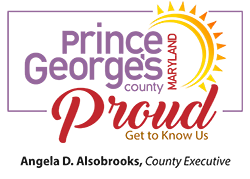Comprehensive Community Cleanup
Comprehensive Clean Up Program
1. What does the Comprehensive Clean Up Program do?
The program is designed to revitalize, enhance and help maintain unincorporated areas of the county. The Department of the Environment (DoE) works with organized Civic and Homeowners Associations to provide a concentrated focus of county cleanup and maintenance services to their community over a 2-week period.
This program, which was original established in 1986, currently provides 21 cleanup phases annually (1 cleanup phase has a minimum of 500 and a maximum of 1,000 single family detached homes or townhouses).
2. Housing Code Inspection/Zoning Inspection (DPIE Property Standards Division)
Common Violations:
Broken or missing windows
Commercial vehicles parked on residential zoned property
Exterior property being used to store trash, debris, furniture, appliances, tires, or building material
Fence, roof, shed, swimming pool, porch, or steps in disrepair
Firewood stored on the ground
Flaking or peeling paint
High grass and weeds (over 12 inches)
Motor vehicle repair on residential zoned property
Motor vehicles with expired tags
Operating a business (excludes Home Occupations) from residential zoned property
Rats/rodents on the premises
Property owners are given 30 days to bring the property into compliance. At the end of that time, should the property still be found to be in violation of the code, the county will seek a court order to ensure compliance after an additional 15 days.
4. Tagging & Towing of Abandoned Vehicles (DoE, Vehicle Audit Unit)
The county will tag all abandoned vehicles on public streets. An abandoned vehicle is one which does not display proper tags, or the vehicle is wrecked, dismantled or inoperable. Tagged vehicles not brought into compliance will be towed after a minimum wait of 48 hours.
5. Bulky Trash Collection (DoE, Waste Management Division)
On a pre-designated day, the county will perform a curbside collection of large items which are not normally collected by the regular trash contractor such as furniture, refrigerators (with the door removed), washing machines, hot water heaters, and other similar items.
6. Tree Trimming (Department of Public Works & Transportation [DPW&T], Office of Highway Maintenance)
The county will send a crew foreman to do a preliminary survey of all trees located within the public road right of way. Trees will be identified for future trimming to meet the following specifications:
Remove all branches lower than 7 feet above the sidewalk, 10 feet above the curb, and 12 feet above the road.
Remove all dead or diseased branches, leaders or the entire tree if necessary.
7. Roadside Litter Collection (DPW&T, Office of Highway Maintenance)
The county will send a crew foreman to do a preliminary survey and, if necessary, will direct a crew to pick up litter within the public road right of way.
8. Storm Drain Maintenance (DoE, Stormwater Management Division)
The county will send an inspector to conduct a watershed survey and check the storm drain system for water pollution/illegal discharge. If an abnormal discharge is detected, water samples will be taken and tested for pollutants at a county lab. If pollutants are present, the inspector will search for the source and take corrective action.
9. Storm Drain Water Quality Testing/Watershed Survey (DoE, Stormwater Management Division)
The county will send an inspector to conduct a watershed survey and check the storm drain system for water pollution/illegal discharge. If an abnormal discharge is detected, water samples will be taken and tested for pollutants at a county lab. If pollutants are present, the inspector will search for the source and take corrective action.
10. Program Administration (DoE, Sustainable Services Division)
The county coordinates the scheduling of all services provided during the cleanup and prints flyers with calendar of services, program guidelines, and community map. It is necessary for the Civic or Homeowners Association to distribute the flyers or publish a copy in its community newsletter. The county also encourages each participating community to organize and conduct its own community-sponsored environmental enhancement project during the scheduled cleanup period.
Volunteers may organize and participate in activities such as storm drain stenciling projects, stream cleanups, neighborhood cleanups or tree plantings. These projects help to maintain a sense of stewardship and neighborhood pride. DoE will work with the community to identify potential projects and offer technical assistance to volunteers.
Note: Leaf Collection and Street Sweeping (DPW&T) are no longer included as part of the program but are still provided by DPW&T on an independent basis. For more information on this program, please visit the website below:
(https://www.princegeorgescountymd.gov/488/Comprehensive-Community-Clean…)
